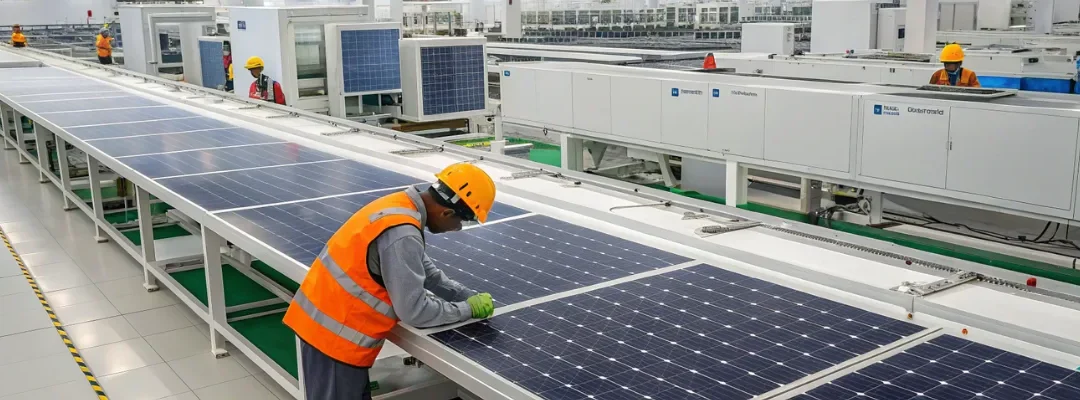Introduction: Why Self-Reliance Matters
India has pledged 500 GW of non-fossil capacity by 2030, with solar expected to contribute over half of this target. But today, India depends heavily on imports of PV cells, wafers, modules, and critical raw materials, leaving the sector vulnerable to global price fluctuations and supply disruptions.
To achieve true energy independence, India must build a self-reliant solar supply chain that spans manufacturing, R&D, raw materials, and exports.
India’s Current Solar Supply Chain Landscape
- Imports Dominate → India imports the bulk of cells and modules, mostly from China and Southeast Asia.
- Limited Domestic Capacity → Module manufacturing has grown (~40+ GW), but cell and wafer production is still limited.
- Raw Material Gaps → Polysilicon, EVA sheets, and solar-grade glass are largely imported.
- Surging Demand → With rooftop + utility-scale projects booming, India needs a reliable and affordable supply of components.
Key Challenges Hindering Self-Reliance
- High Capital Costs → Building polysilicon and cell facilities requires billions in investment.
- Technology Gaps → India lags in advanced PV technologies like TOPCon and HJT.
- Fragmented Supply Chain → Lack of integration between wafer → cell → module → inverter → storage.
- Skilled Workforce Shortage → Need for technicians trained in advanced solar manufacturing.
- Policy Uncertainty → Fluctuating import duties and subsidy delays discourage investors.
Strategies to Build a Self-Sufficient Solar Ecosystem
1. Strengthen Domestic Manufacturing
- Expand beyond module assembly into integrated polysilicon → wafer → cell → module production.
- Build capacity for ancillary components (back sheets, EVA, junction boxes, glass, and inverters).
2. Leverage Policy Support Effectively
- PLI Scheme → Scale up allocations for fully integrated factories.
- Stable Tariff Roadmap → Clear timelines for BCD and anti-dumping duties.
- Green Financing → Low-interest loans and credit support for solar manufacturers.
3. Invest in R&D & Technology Partnerships
- Create national solar research hubs to develop next-gen PV technologies.
- Facilitate joint ventures with global leaders for knowledge transfer.
- Promote innovation in storage, perovskite cells, and hybrid solutions.
4. Develop a Skilled Workforce
- Launch specialized training programs for PV manufacturing, plant engineering, and quality control.
- Partner with universities, IITs, and ITIs for solar-specific curricula.
5. Secure Raw Materials
- Encourage domestic mining and refining of silica and rare earths.
- Diversify import sources to avoid over-reliance on a single country.
6. Boost Domestic Demand & Exports
- Enforce phased local content requirements in government tenders.
- Position India as a solar export hub for emerging markets in Africa, Southeast Asia, and the Middle East.
Benefits of a Self-Reliant Solar Supply Chain
- Energy Security → Less exposure to global supply disruptions.
- Economic Growth → Creation of lakhs of jobs in manufacturing and ancillaries.
- Technology Leadership → Move from being an end-user to an innovation hub.
- Cost Stability → Long-term price predictability for developers & consumers.
- Sustainability → Shorter supply chains reduce carbon footprint.
Global Lessons for India
- China → Built integrated clusters for polysilicon, wafers, cells, and modules backed by large-scale R&D.
- United States → The Inflation Reduction Act provides tax credits and manufacturing incentives.
- European Union → The EU Green Deal emphasizes local supply chains and recycling.
India can blend these lessons with its unique strengths — abundant demand, skilled labor, and strong policy momentum.
Expert Insight
“India must not miss the solar manufacturing revolution. By investing in the entire value chain — from raw materials to exports — we can turn solar into both an energy and economic powerhouse.”
— Dr. Ramesh Iyer, Solar Manufacturing Specialist

